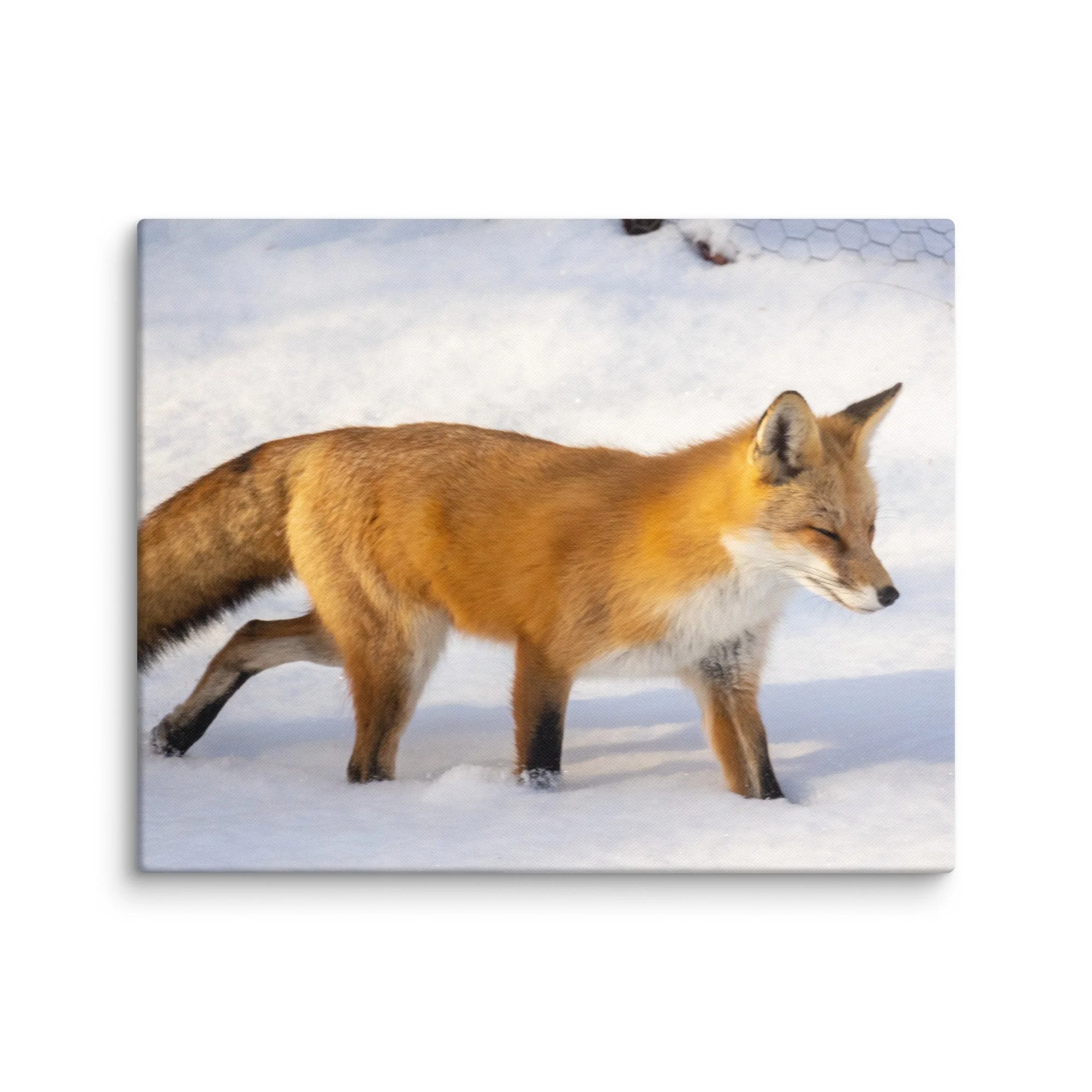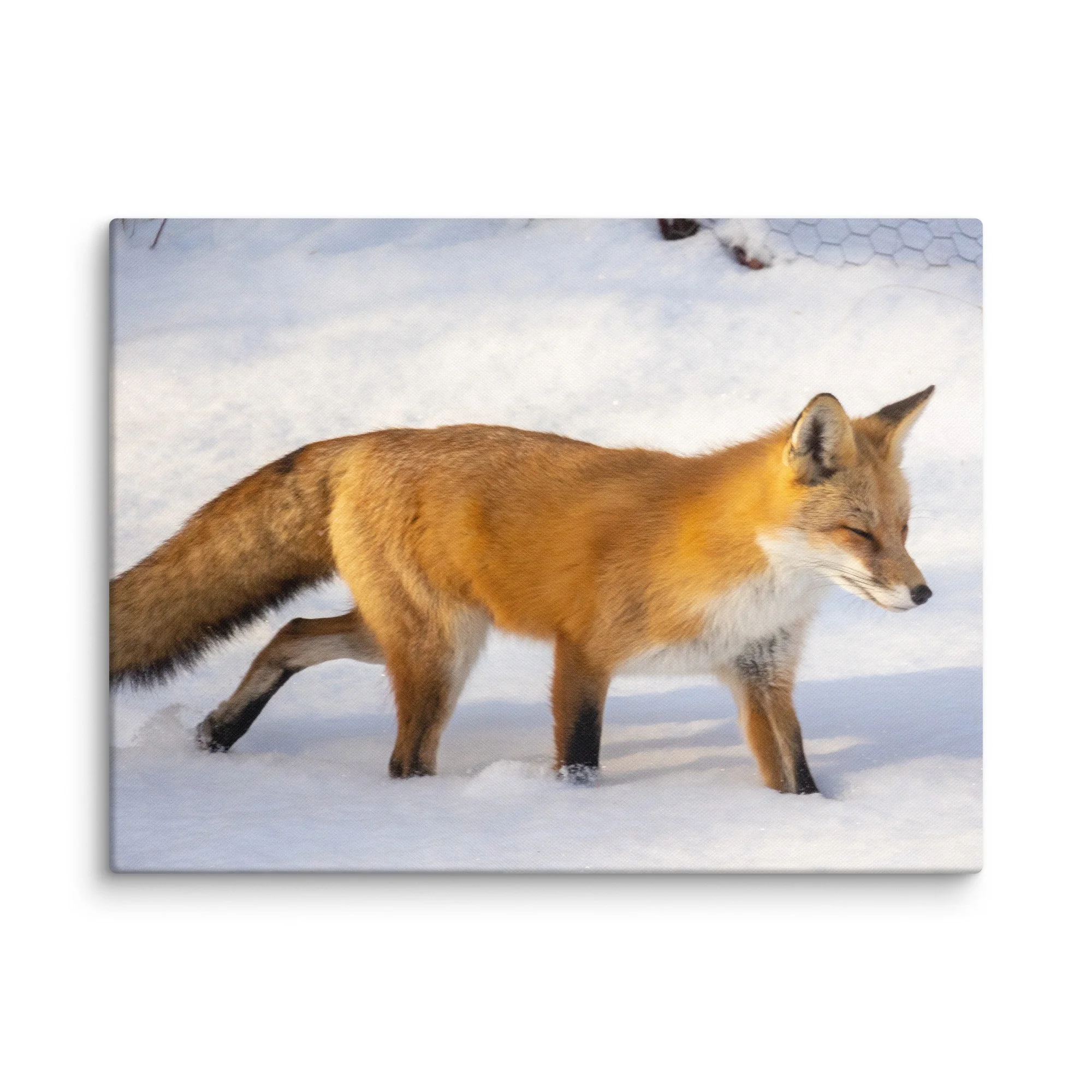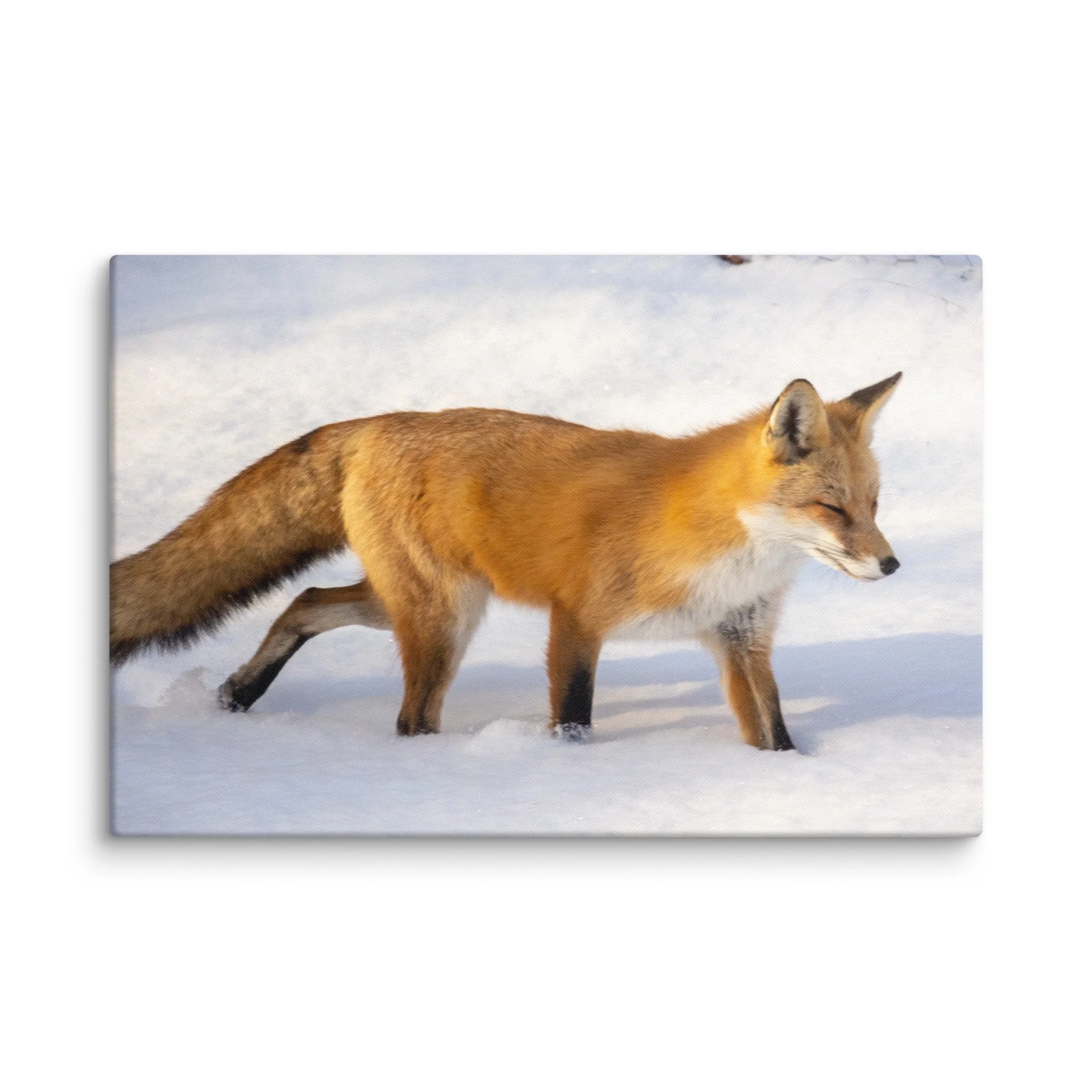 Image 1 of 4
Image 1 of 4

 Image 2 of 4
Image 2 of 4

 Image 3 of 4
Image 3 of 4

 Image 4 of 4
Image 4 of 4





Canvas - Red Fox
from $45.00
The red fox (Vulpes vulpes) is the world's most widespread land carnivore and is easily recognized by its rusty-red coat, black legs and ears, and its distinctively long, white-tipped, bushy tail. As an incredibly adaptable species, it thrives across a vast range of habitats, from forests, farmlands, and prairies to highly urbanized environments, and is found throughout the entire Northern Hemisphere. This medium-sized member of the dog family typically weighs between 7 and 15 pounds, is generally solitary, and is most active during the twilight hours of dawn and dusk. The red fox is a cunning and opportunistic omnivore, with its diet consisting mainly of small mammals like rodents and rabbits, but also including insects, birds, fruits, and vegetables, which it often hunts using its phenomenal hearing to locate prey underground before executing its characteristic high-arcing pounce. Foxes, known for their cleverness and ability to cache or bury uneaten food for later, typically use abandoned burrows for dens, especially when raising their annual litter of pups, or kits.
Size:
The red fox (Vulpes vulpes) is the world's most widespread land carnivore and is easily recognized by its rusty-red coat, black legs and ears, and its distinctively long, white-tipped, bushy tail. As an incredibly adaptable species, it thrives across a vast range of habitats, from forests, farmlands, and prairies to highly urbanized environments, and is found throughout the entire Northern Hemisphere. This medium-sized member of the dog family typically weighs between 7 and 15 pounds, is generally solitary, and is most active during the twilight hours of dawn and dusk. The red fox is a cunning and opportunistic omnivore, with its diet consisting mainly of small mammals like rodents and rabbits, but also including insects, birds, fruits, and vegetables, which it often hunts using its phenomenal hearing to locate prey underground before executing its characteristic high-arcing pounce. Foxes, known for their cleverness and ability to cache or bury uneaten food for later, typically use abandoned burrows for dens, especially when raising their annual litter of pups, or kits.
